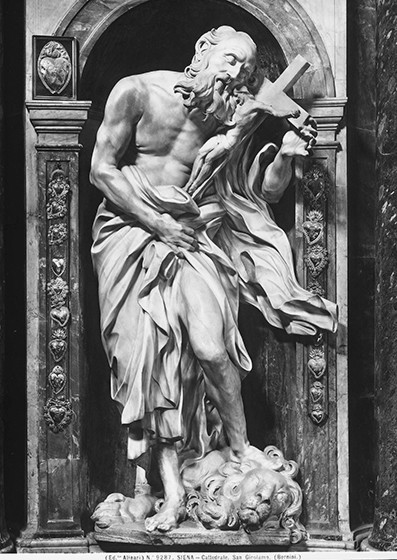St. Jerome, by Gian Lorenzo Bernini

In this sculpture, Gian Lorenzo Bernini (1598–1680) depicts St. Jerome, the fourth-century hermit and scholar. Jerome translated the Greek Bible into Latin, a text that became the commonly used version of the Bible in the church, known as the Vulgate. A popular legend states that when a lion raised its wounded paw, Jerome removed the thorn, after which the lion became his constant companion. Bernini’s sculpture was commissioned by his longtime friend Cardinal Fabio Chigi, after he became Pope Alexander VII in 1655. The new pope wanted Bernini to redesign the Chigi family chapel in Rome. Bernini responded by creating two figures symbolizing penance, St. Jerome and St. Mary Magdalen, and placing them on either side of the chapel’s entrance. The Jerome statue is top heavy, and the figure’s weight is only on his right leg. His left foot is buried in the mane of the lion, whose paw is also visible. The unbalanced stance is somewhat disconcerting. Jerome’s eyes are closed in prayer as his cheek touches the head of Christ on the crucifix. This Baroque figure of the penitent, humble Jerome evokes a similar devotion in the viewer.





